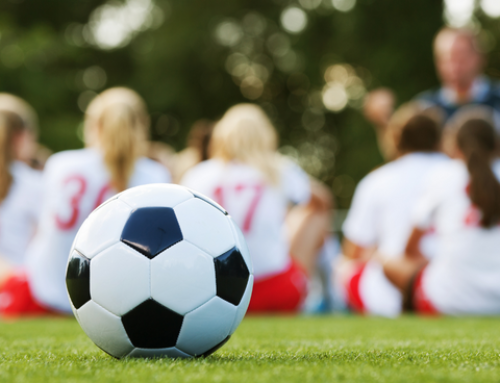Agility Training with Cornell Lacrosse
By Tom Howley
Strength and conditioning coach for Cornell University
Agility is extremely important because of the constant starting and stopping in lacrosse; you engage it throughout the course of a game.
Some people believe that speed and agility are purely products of genetics. My belief is that speed and agility are skills, and, like other skills, they can be taught and learned. Obviously, everyone has a genetic threshold. But with hard work, you can improve both. To achieve high levels of speed and agility, you must train them—and complement that work with strength training.
Whenever we perform agility drills, I make sure the kids understand the importance of what they’re doing and how it will carry over to the field. I look for certain things that will help them change direction quickly—good leverage, changing their centers of gravity, balance and body control—because all these things carry over to the game.
5 10 5 Progression
Complete two reps of each progression with a 45 second rest
Set-up
- Set up three cones five yards apart in straight line
- Start in athletic stance at center cone
Progression 1 – sprint, sprint, sprint
- Crossover step right and sprint to right cone
- Touch cone and sprint to left cone
- Touch cone and sprint through center cone
- Perform second rep in opposite direction
Progression 2 – sprint, shuffle, sprint
- Crossover step right and sprint to left cone
- Touch cone and shuffle to left cone
- Touch cone and sprint through center cone
- Perform second rep in opposite direction
Progression 3 – sprint, back peddle, sprint
- Crossover step right and sprint to left cone
- Touch cone and back peddle to left cone
- Touch cone and sprint through center cone
- Perform second rep in opposite direction
Coaching Points
1. Always push off away from the target when changing direction.
2. Make sure your head and shoulders are pointing in the direction you’re running.
3. As you decelerate lower your center of gravity by bending your knees at the turn point.
4. When changing direction, plant your foot underneath your hips and push your center of gravity forward.
RECOMMENDED FOR YOU
MOST POPULAR
Agility Training with Cornell Lacrosse
By Tom Howley
Strength and conditioning coach for Cornell University
Agility is extremely important because of the constant starting and stopping in lacrosse; you engage it throughout the course of a game.
Some people believe that speed and agility are purely products of genetics. My belief is that speed and agility are skills, and, like other skills, they can be taught and learned. Obviously, everyone has a genetic threshold. But with hard work, you can improve both. To achieve high levels of speed and agility, you must train them—and complement that work with strength training.
Whenever we perform agility drills, I make sure the kids understand the importance of what they’re doing and how it will carry over to the field. I look for certain things that will help them change direction quickly—good leverage, changing their centers of gravity, balance and body control—because all these things carry over to the game.
5 10 5 Progression
Complete two reps of each progression with a 45 second rest
Set-up
- Set up three cones five yards apart in straight line
- Start in athletic stance at center cone
Progression 1 – sprint, sprint, sprint
- Crossover step right and sprint to right cone
- Touch cone and sprint to left cone
- Touch cone and sprint through center cone
- Perform second rep in opposite direction
Progression 2 – sprint, shuffle, sprint
- Crossover step right and sprint to left cone
- Touch cone and shuffle to left cone
- Touch cone and sprint through center cone
- Perform second rep in opposite direction
Progression 3 – sprint, back peddle, sprint
- Crossover step right and sprint to left cone
- Touch cone and back peddle to left cone
- Touch cone and sprint through center cone
- Perform second rep in opposite direction
Coaching Points
1. Always push off away from the target when changing direction.
2. Make sure your head and shoulders are pointing in the direction you’re running.
3. As you decelerate lower your center of gravity by bending your knees at the turn point.
4. When changing direction, plant your foot underneath your hips and push your center of gravity forward.











